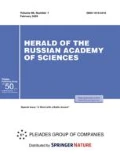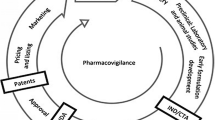Abstract
Original drugs are those that differ in the structure, mechanism, and formulation and that have proved advantages over the existing preparations. The main goal of creating original drugs is to improve the efficacy of pharmacotherapy. The author describes drug exploratory research and development methods: the principle of similarity to physiologically active substances, the design of structures that affect selected targets (receptors, ion channels, enzymes, chaperones, expression factors, etc.), and the study of the dependence of pharmacological effects on the chemical structure, as well as the content of three stages of original drug development, drawing specific examples of creating new drugs.
Similar content being viewed by others
Author information
Authors and Affiliations
Corresponding author
Additional information
Original Russian Text © S.B. Seredenin, 2016, published in Vestnik Rossiiskoi Akademii Nauk, 2016, Vol. 86, No. 6, pp. 484–487.
RAS Academician Sergei Borisovich Seredenin is director of the Zakusov Research Institute of Pharmacology.
Rights and permissions
About this article
Cite this article
Seredenin, S.B. Methodology of the search for and creation of original drugs. Her. Russ. Acad. Sci. 86, 147–150 (2016). https://doi.org/10.1134/S1019331616030072
Received:
Published:
Issue Date:
DOI: https://doi.org/10.1134/S1019331616030072




